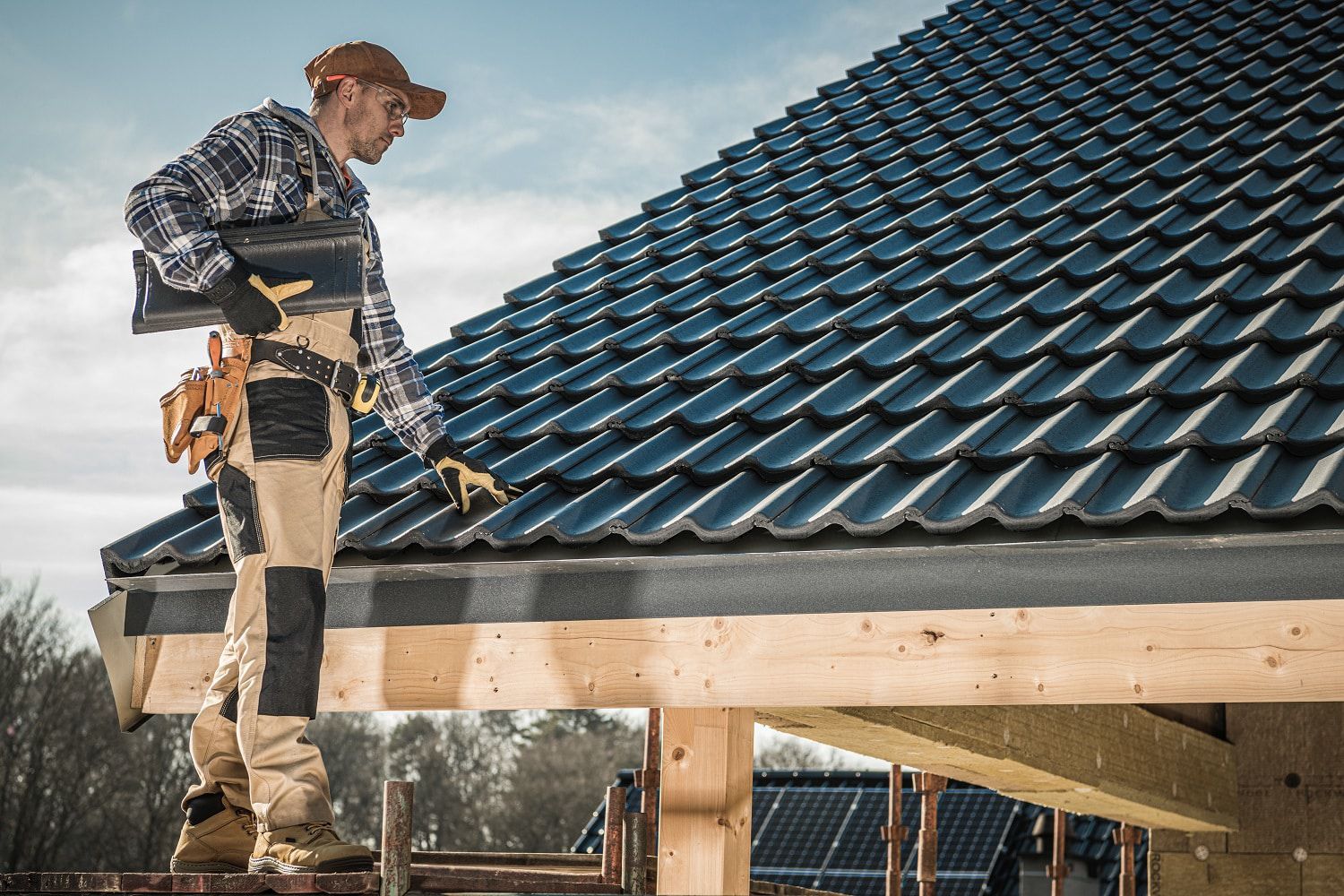Work with an professional Toledo Roofer for industrial roofing projects.
Work with an professional Toledo Roofer for industrial roofing projects.
Blog Article
Exactly How to Evaluate Different Roof Choices for Your Building Demands
Assessing roof covering choices for your building needs an extensive approach that takes into consideration numerous factors such as the planned use of the framework, local environment conditions, and product qualities - Perrysburg Roofer. It is necessary to weigh the advantages and drawbacks of different roof covering types, from asphalt tiles to metal and clay ceramic tiles, while additionally factoring in preliminary prices and long-term maintenance.
Analyzing Your Building's Demands
To properly assess roofing choices, start by extensively evaluating your building's requirements. Begin by considering the building's meant usage, as different structures might demand varying roofing specs. As an example, domestic roofings often focus on aesthetics and insulation, while industrial structures might concentrate on sturdiness and load-bearing capability.
Next, assess the neighborhood environment conditions that will influence roof performance. Variables such as temperature level fluctuations, rainfall levels, and wind patterns can affect product choice and layout. A roof covering system that stands out in a pleasant environment might not carry out as well in areas susceptible to heavy snowfall or extreme warm.
Furthermore, assess the architectural integrity of your structure. Guarantee that the existing structure can support the picked roof materials, especially if taking into consideration much heavier alternatives. It is likewise critical to assess any neighborhood building codes or guidelines that may determine specific demands for roof.

Contrasting Roof Covering Products
As soon as a detailed analysis of your building's demands has been completed, the following step includes comparing various roof covering products. Each product provides distinct advantages and disadvantages, making it necessary to straighten your selection with your details requirements and scenarios.
Asphalt shingles are widely identified for their price and simplicity of setup, making them a popular choice for property structures. On the various other hand, steel roofing, understood for its sturdiness and durability, can withstand rough climate problems but might include a higher first financial investment.
Clay and concrete tiles provide superb thermal insulation and aesthetic appeal, specifically for Mediterranean-style design, yet they require a more durable structural assistance because of their weight. Timber trembles deal a natural appearance and great insulation homes but may require much more upkeep and are prone to fire hazards.
Reviewing Expense and Spending Plan
Analyzing your roofing choices necessitates a cautious analysis of cost and spending plan considerations. The general allocate a roof task comprises a number of variables, including material prices, labor expenses, maintenance, and possible lasting savings. It is necessary to develop a clear spending plan before checking out particular roofing materials, as this will certainly guide the decision-making process and assist you stay clear of overspending.
Begin by obtaining quotes from multiple contractors to comprehend labor prices in your area. Ensure that these quotes include all essential solutions, such as elimination of the old roof, installation, and any type of extra functions, like insulation or ventilation enhancements - Roofing Contractor. Next, examine the expense of numerous roof covering products, considering both first installment prices and anticipated life-span

Understanding Energy Effectiveness
Power effectiveness plays a crucial role in the selection of roof materials and systems, dramatically influencing both energy usage and total convenience within a structure. An appropriate roof can enhance thermal performance, minimizing the demand for home heating and cooling systems, which subsequently decreases power expenses and lessens ecological effect.
When examining roof choices, think about materials that show rather than absorb heat. Light or reflective roof covering items can significantly decrease roof surface temperature levels, bring about reduced energy use throughout warm months. Furthermore, correct insulation and air flow are important to maximize the power effectiveness of the whole roof. Insulation prevents warm transfer, while ventilation reduces warmth build-up in the attic space.
Another important variable is the roof system's durability and upkeep requirements. Long lasting materials that require less regular replacement add site to long-term power savings. The power efficiency of a roof system can additionally be analyzed anonymous via its conformity with recognized sustainability ratings such as Power CELEBRITY or LEED.
Taking Into Consideration Aesthetic Allure
A roof's visual charm substantially affects the general look of a building, matching its architectural design and boosting visual appeal. Toledo Roofer. When reviewing roof covering choices, it is vital to take into consideration how the chosen material, shade, and layout will balance with the existing structure and area. A well-designed roof covering can boost even the simplest of buildings, changing them into visual centerpieces
Various roof covering materials provide different visual qualities. Standard roof shingles may evoke a timeless beauty, while steel roof can impart a modern-day, streamlined look. Furthermore, the shade of the roof product plays a crucial duty; lighter shades can make a building show up more sizable, while darker tones might produce a cozier setting.
Furthermore, architectural aspects, such as dormers and eaves, can improve the roof covering's visual effect. It is advisable to seek advice from specialist developers or architects to ensure the selected roofing option lines up with the general layout intent. Ultimately, a roof covering should not only give practical benefits however likewise contribute favorably to the structure's aesthetic, reflecting the proprietor's preference and the character of the surrounding environment.
Conclusion

Report this page